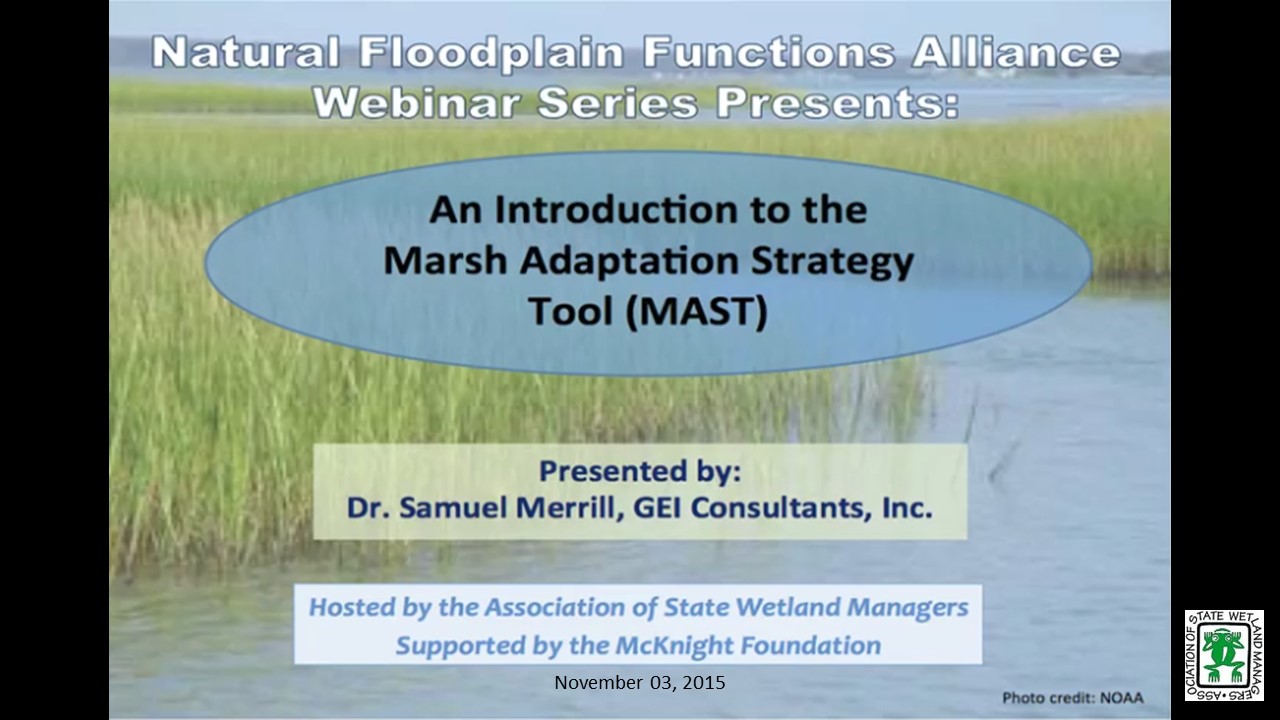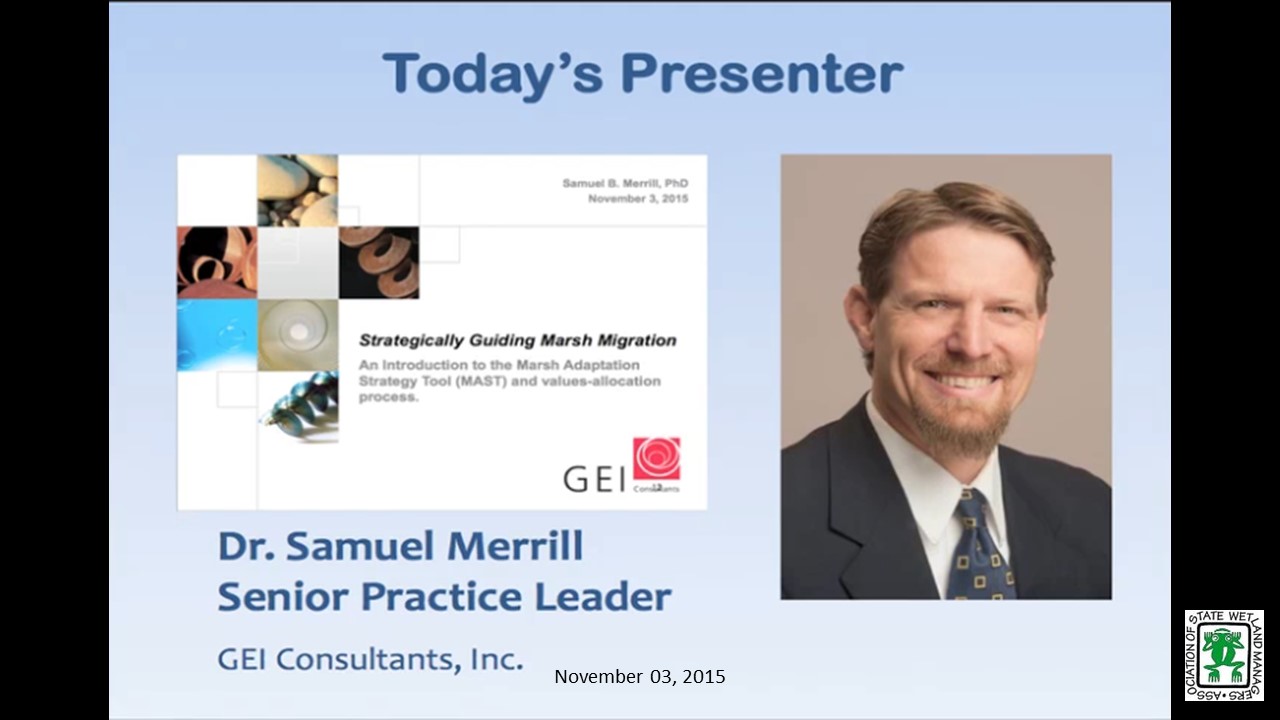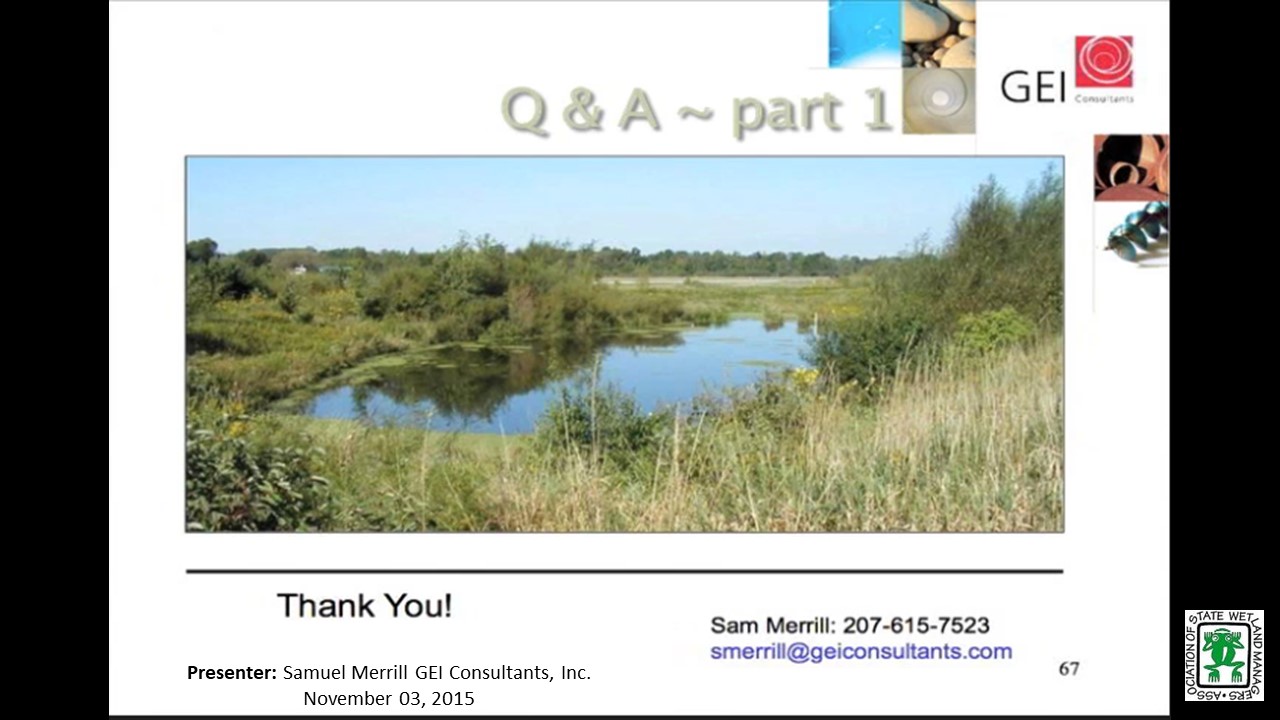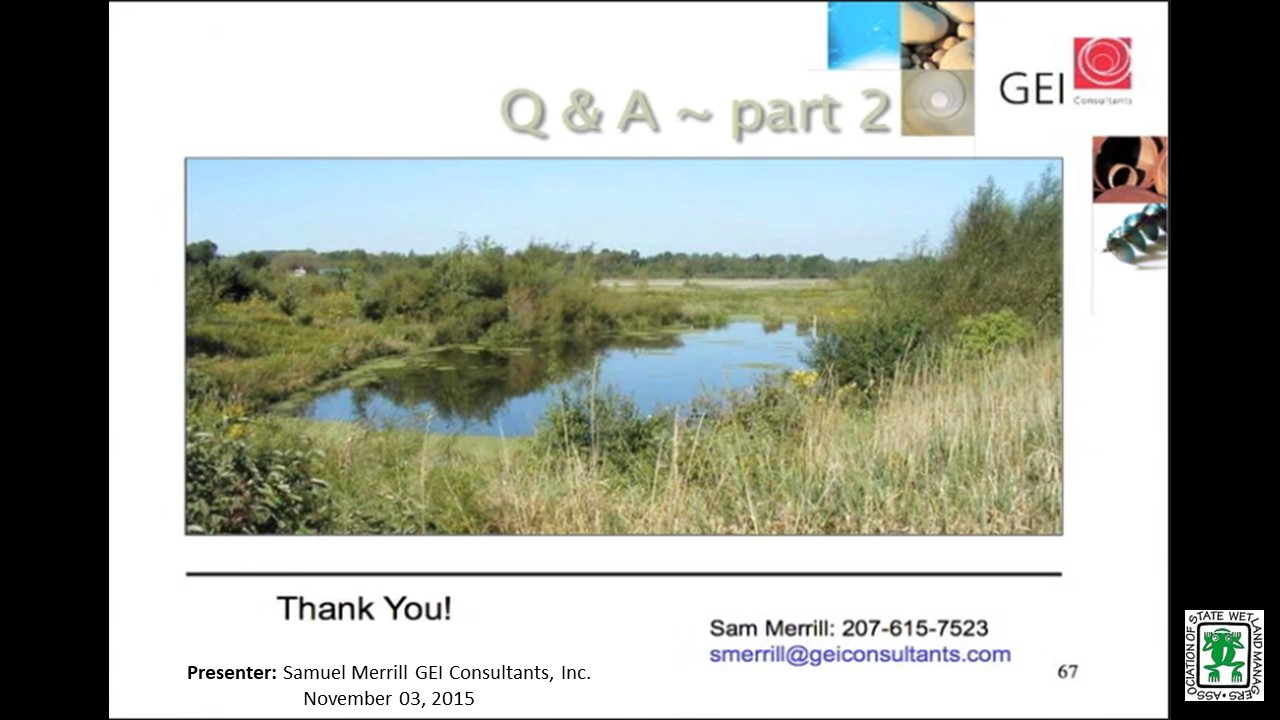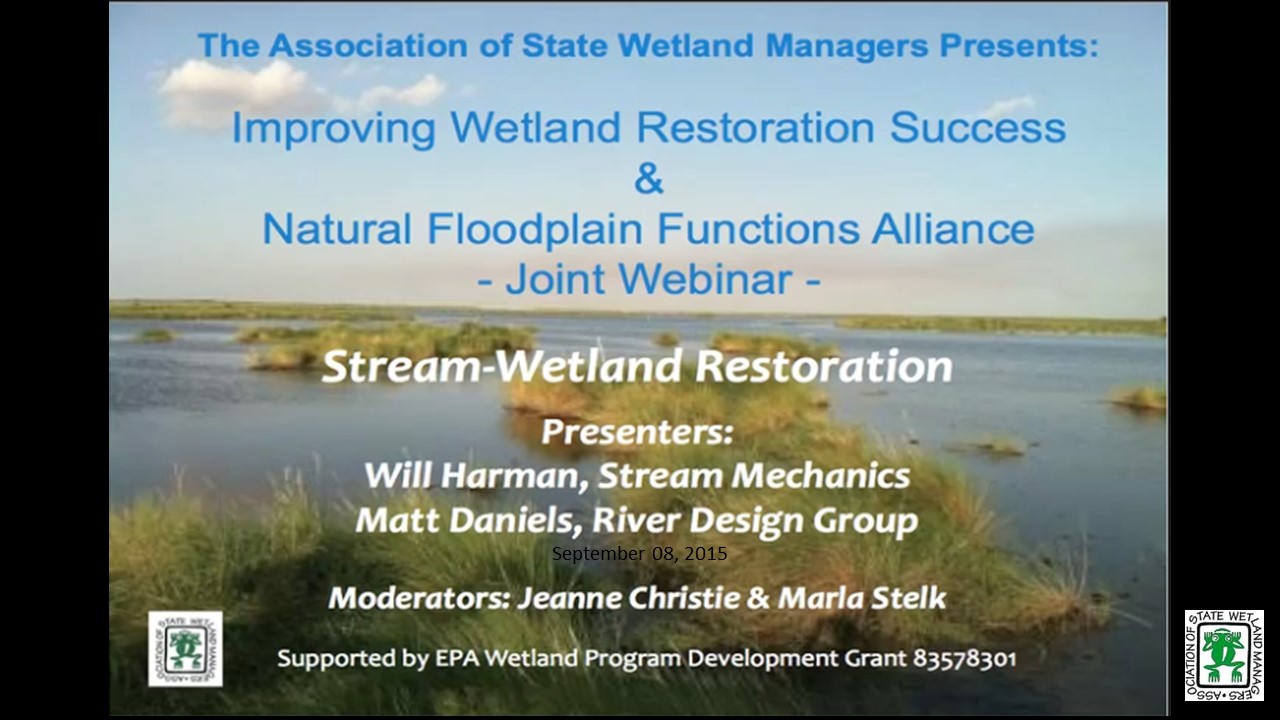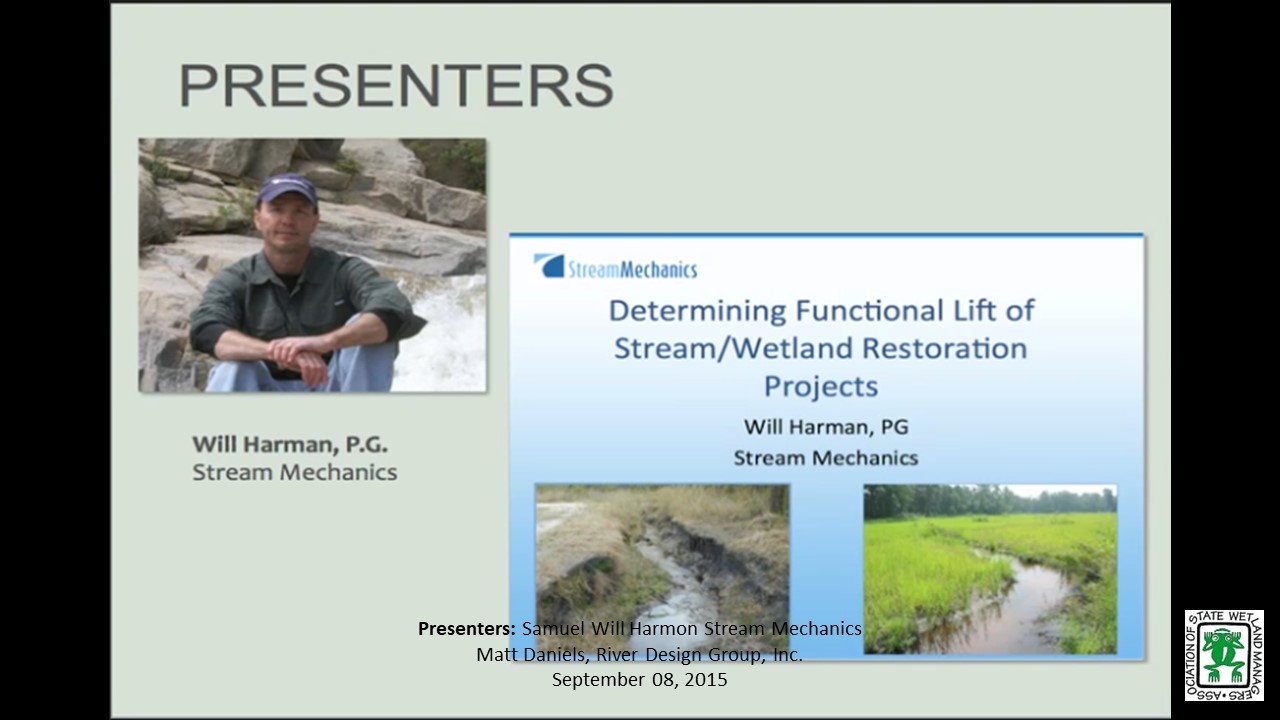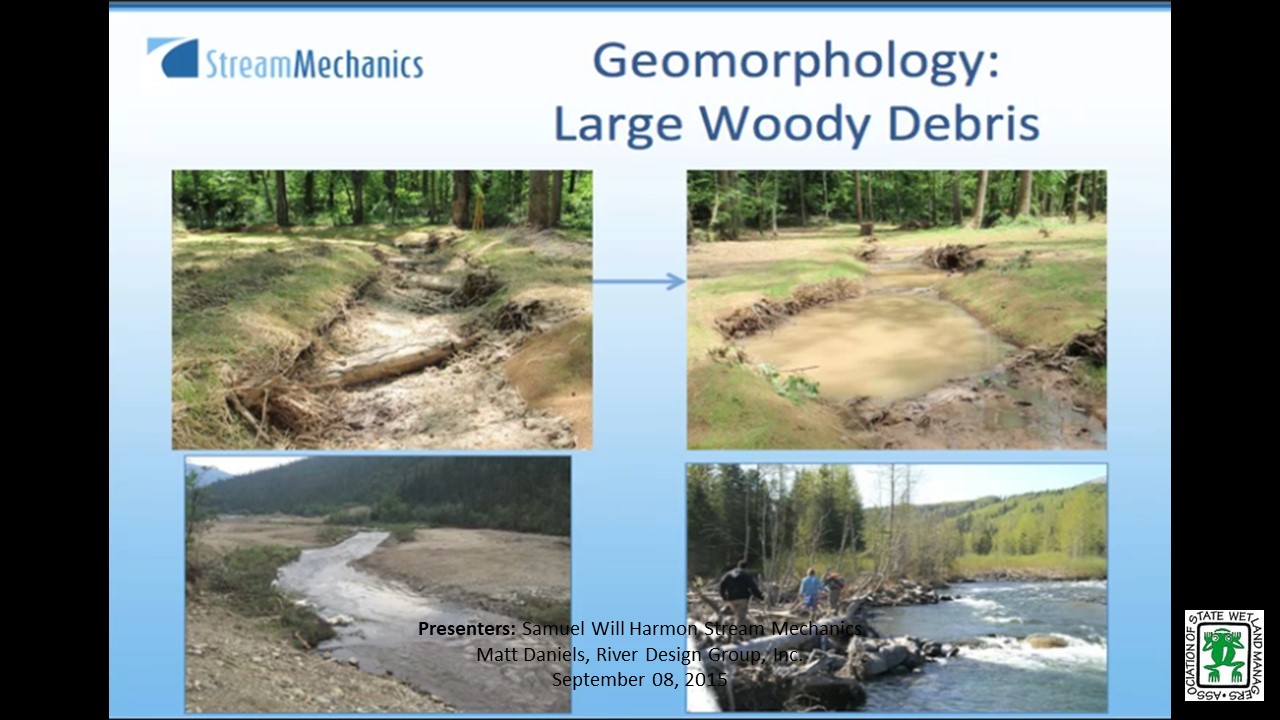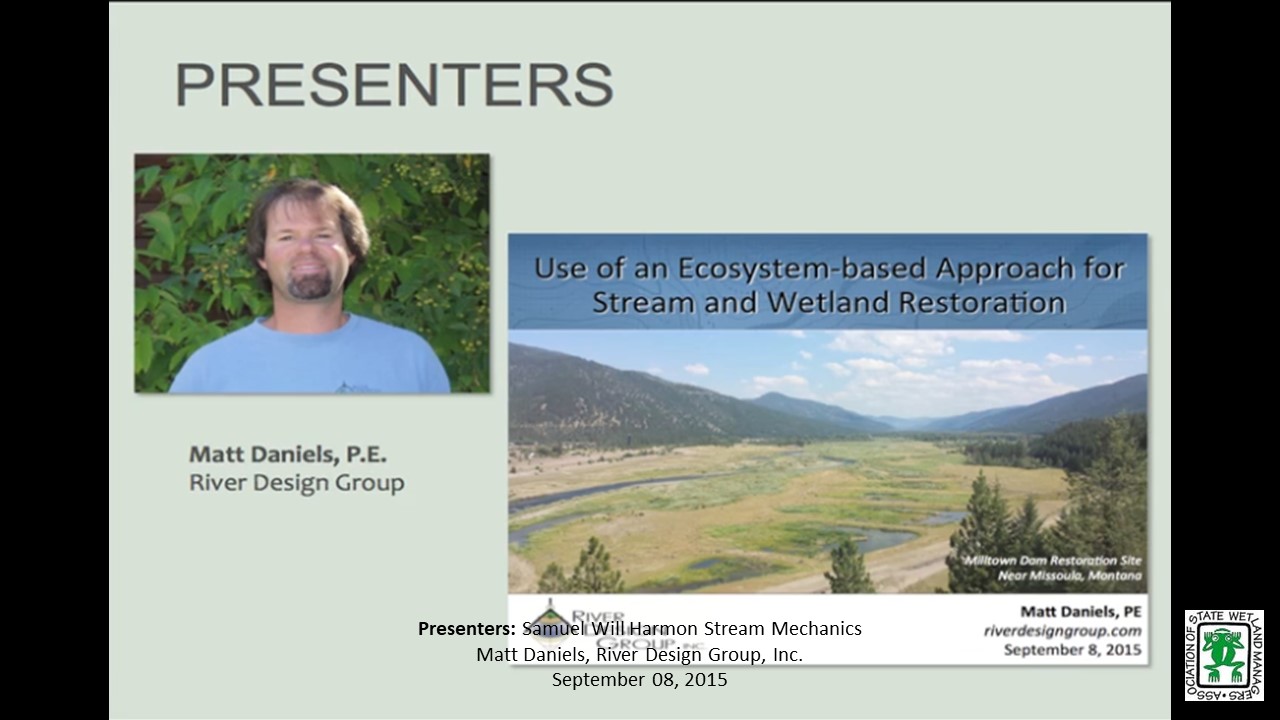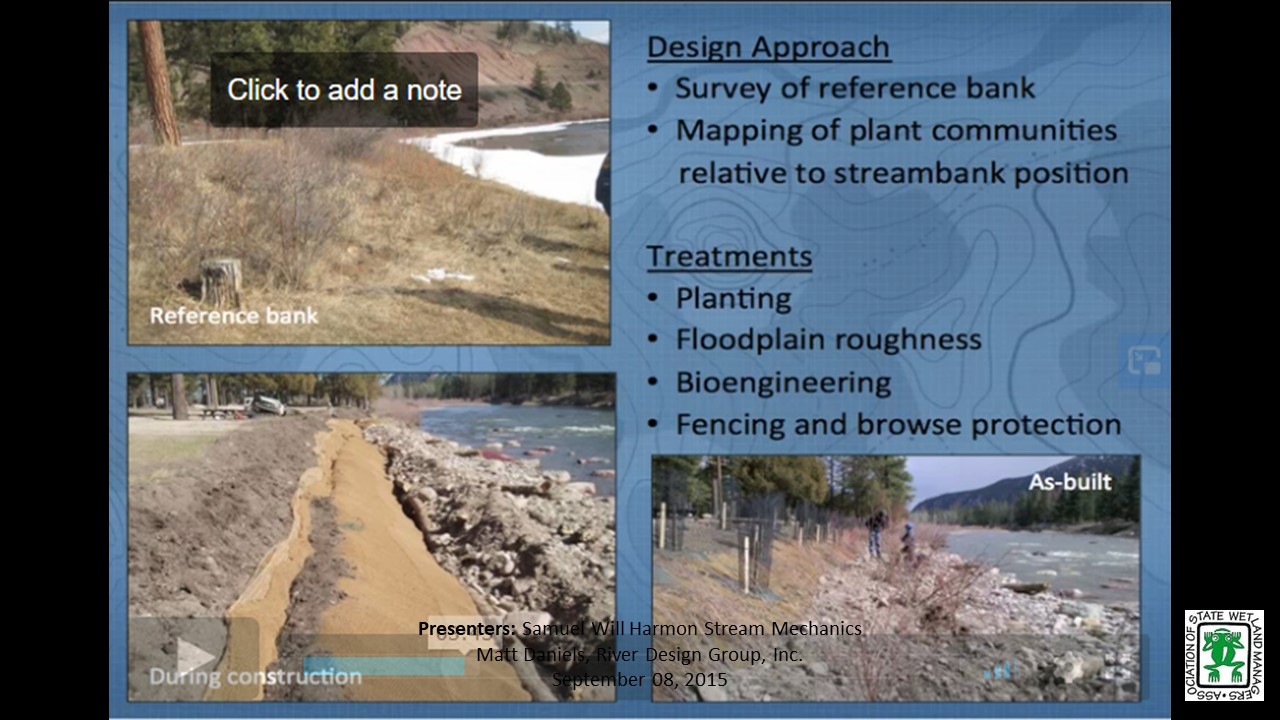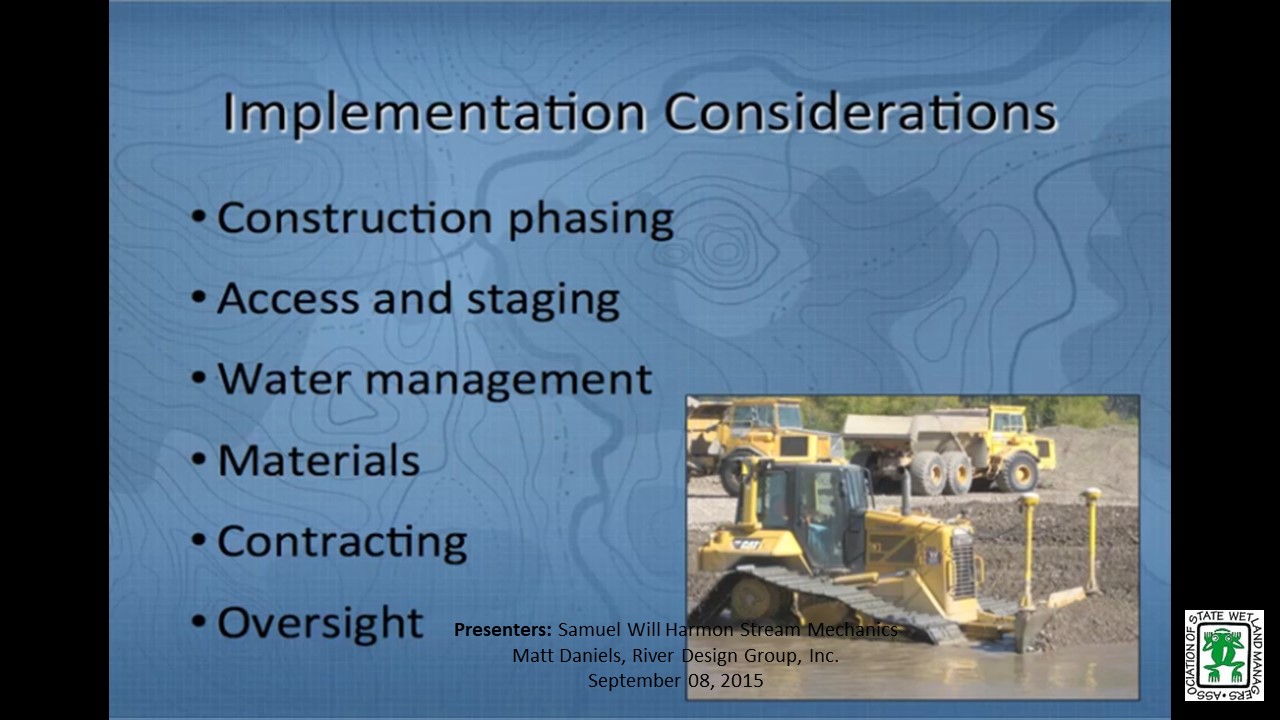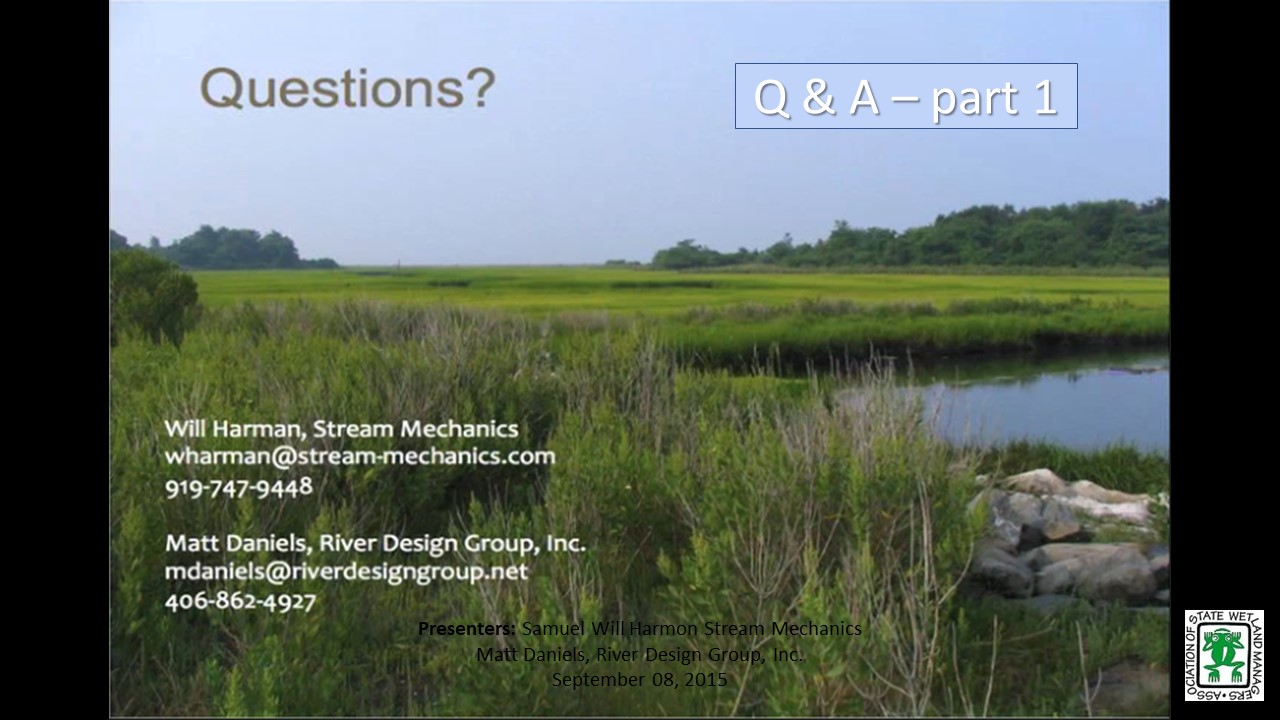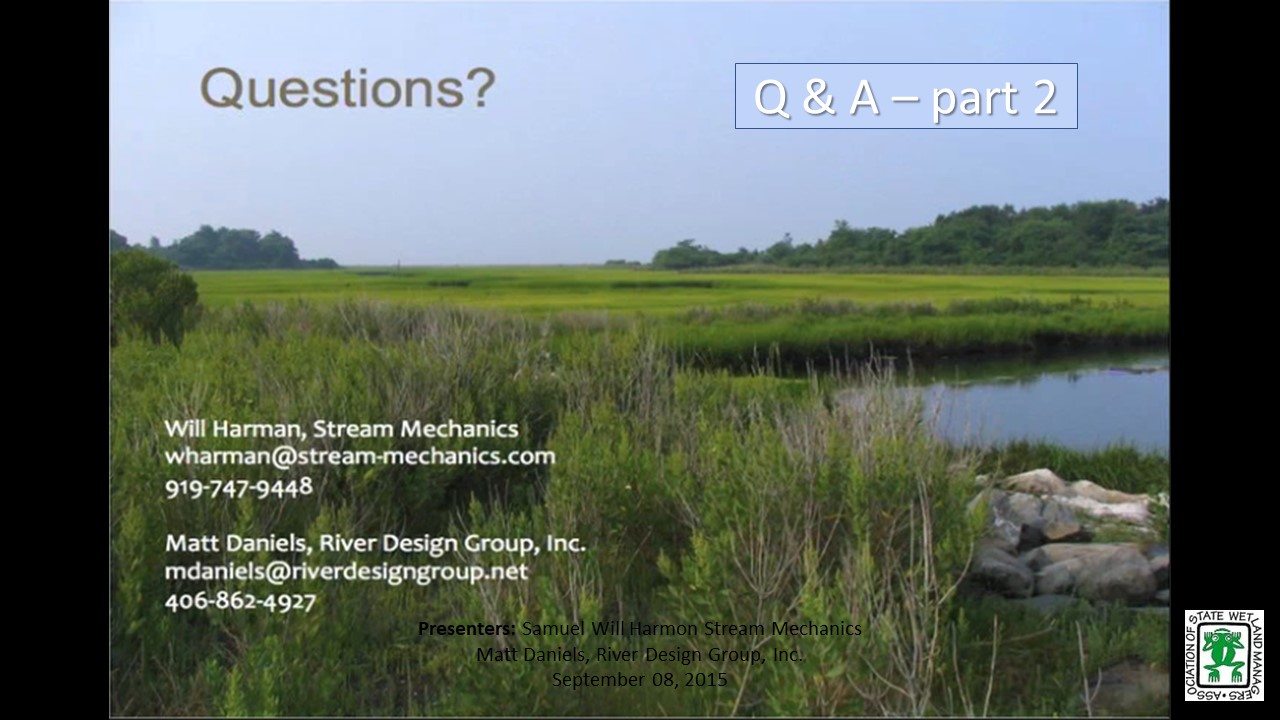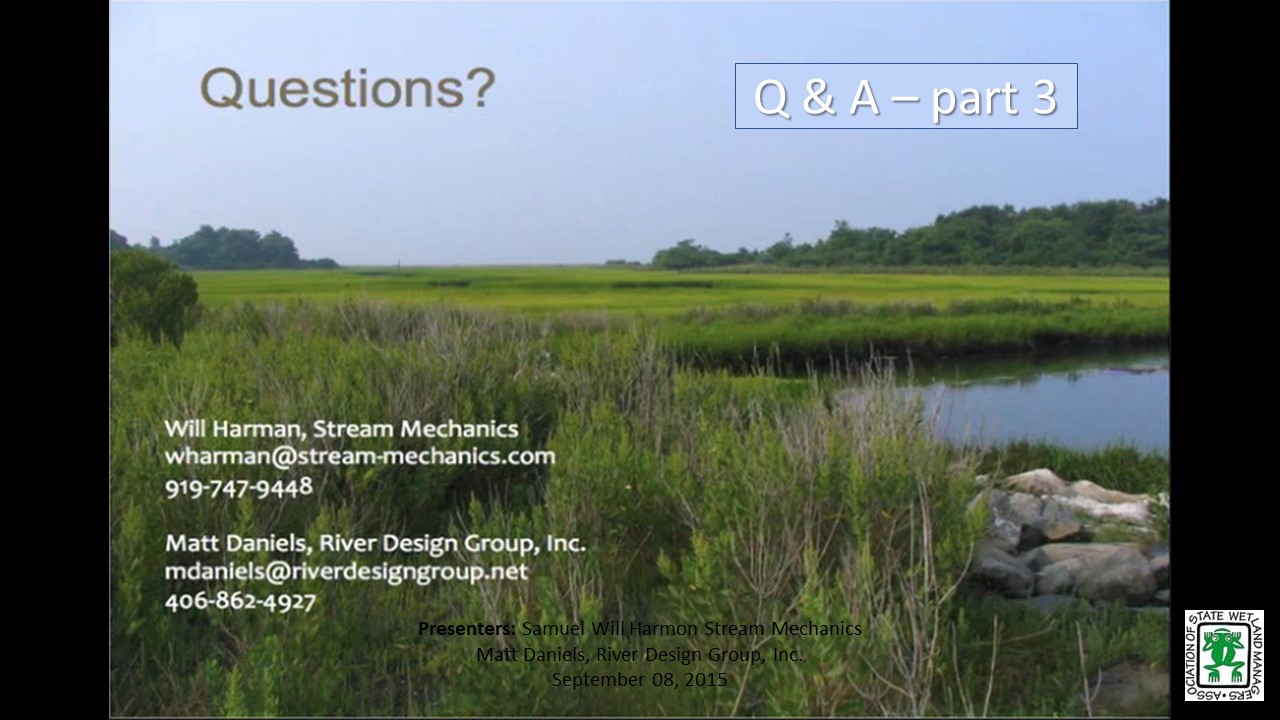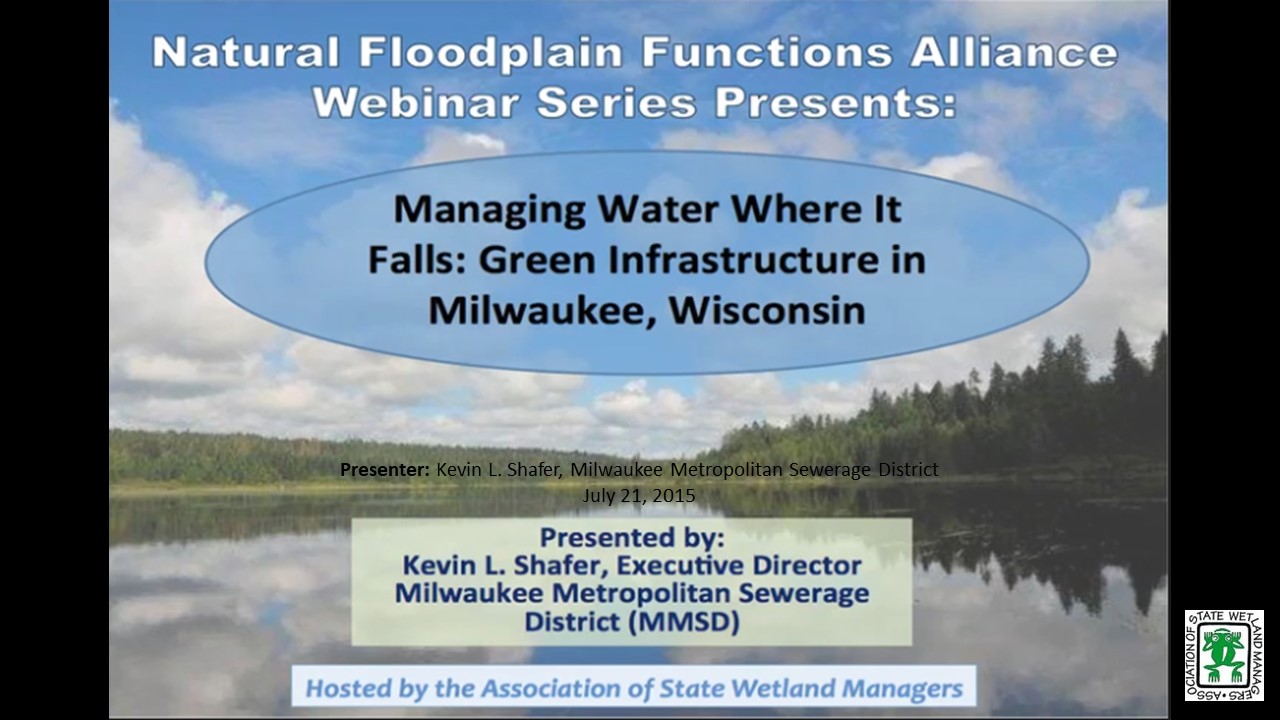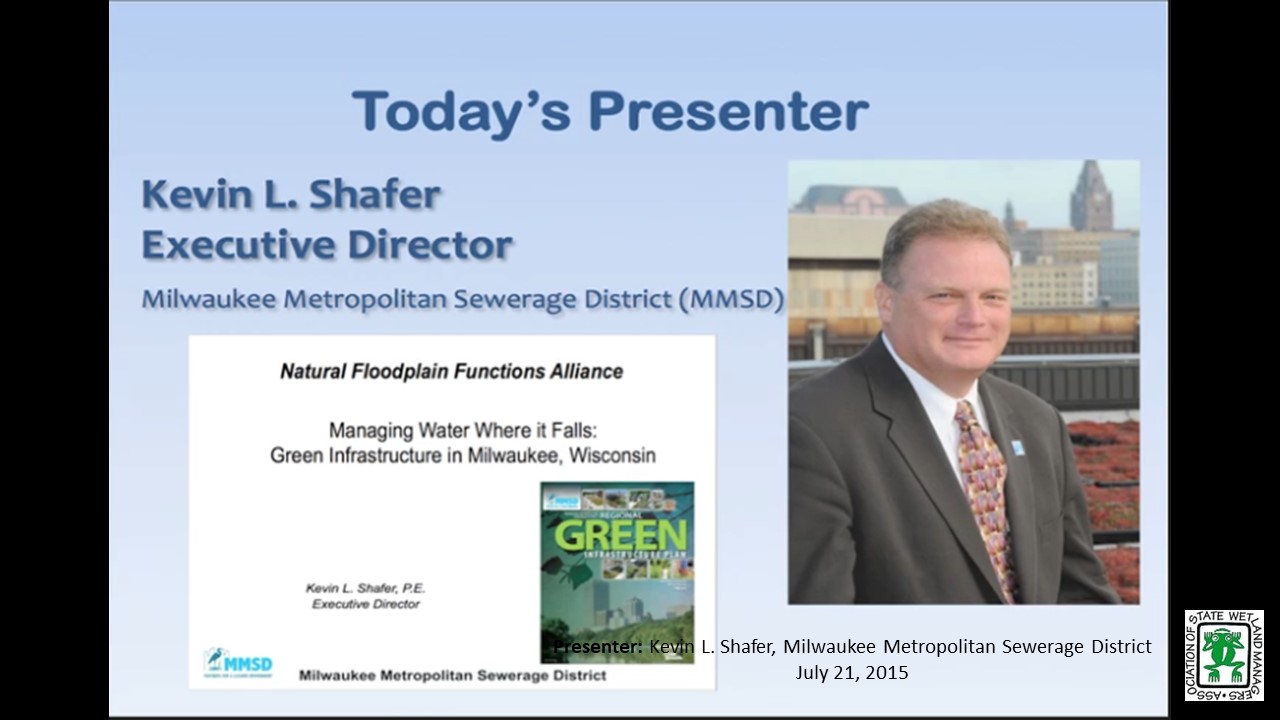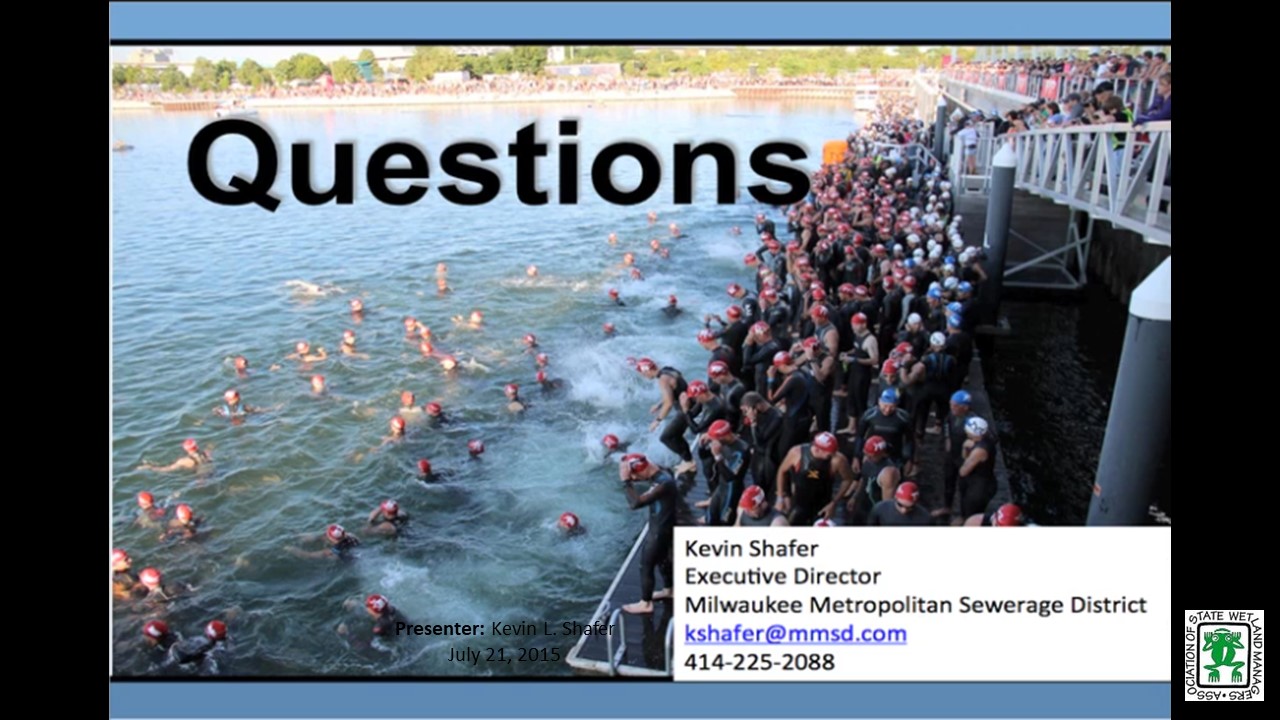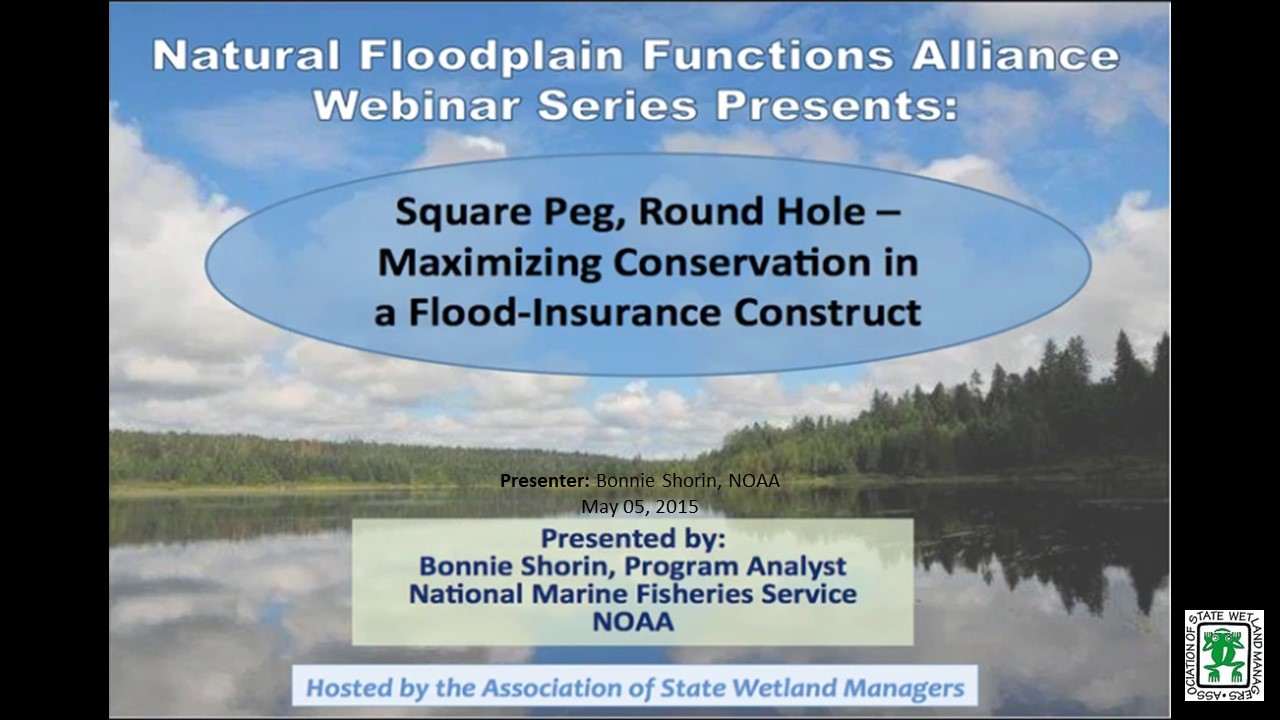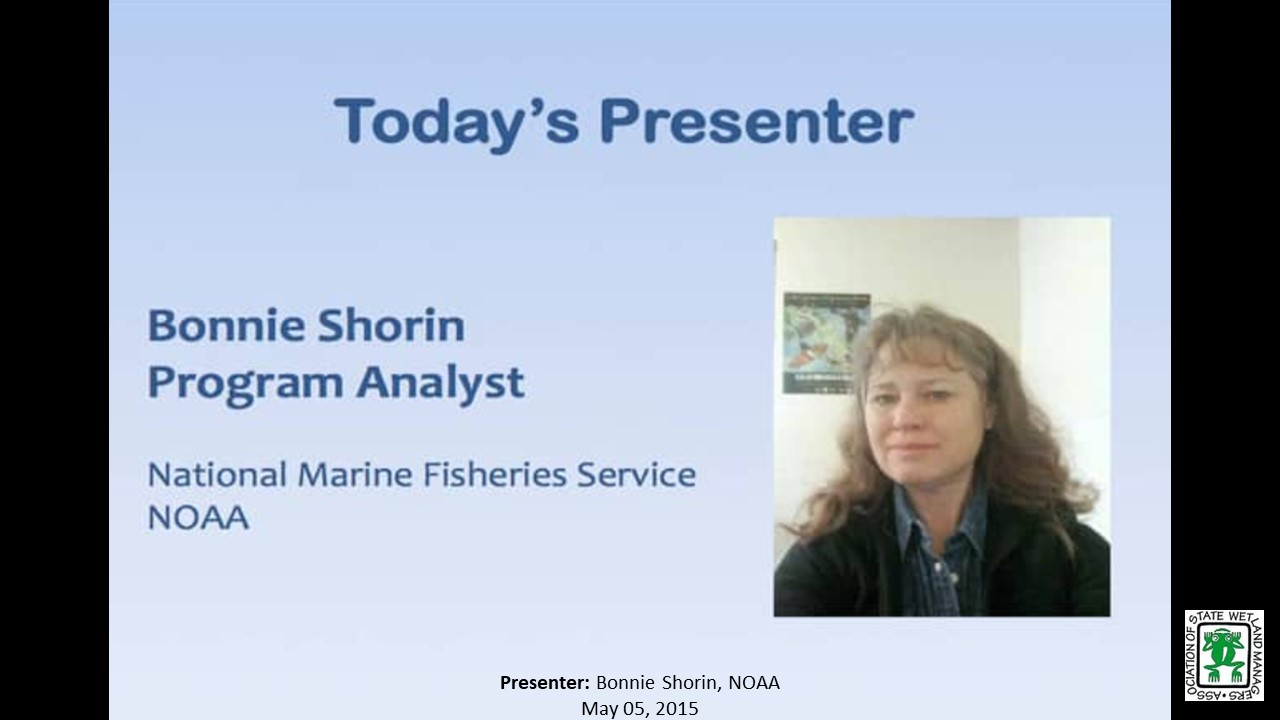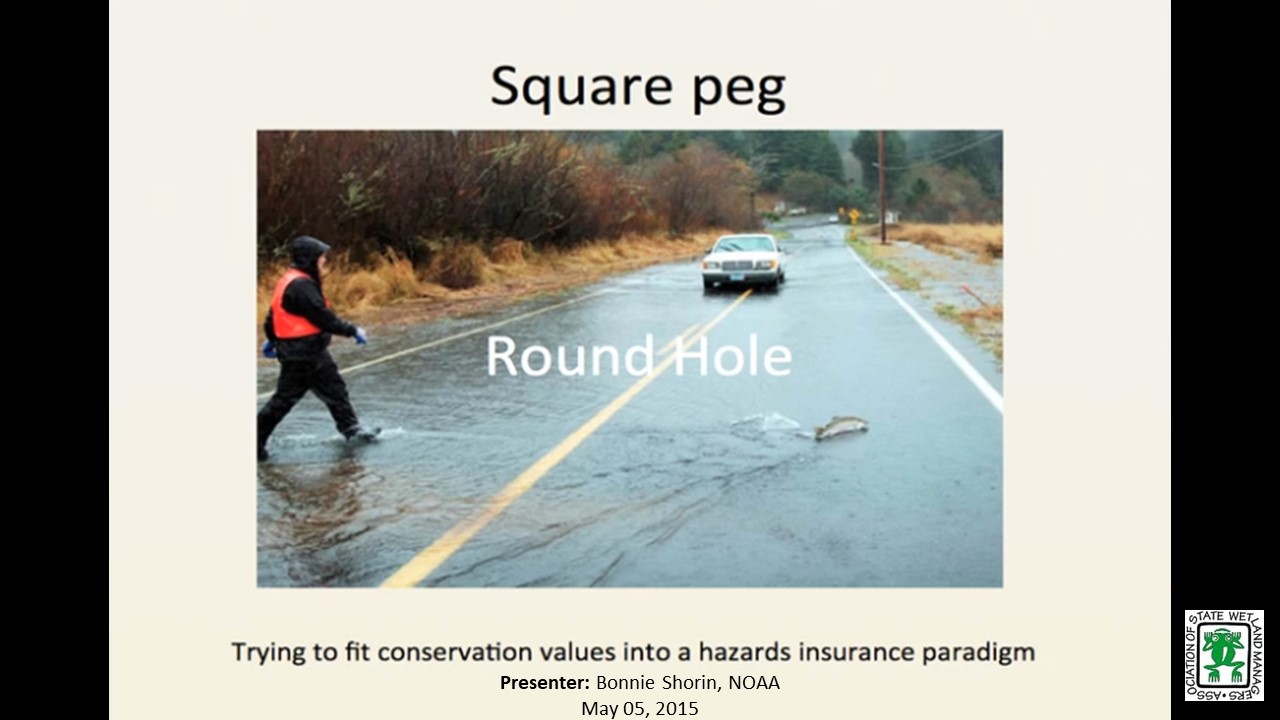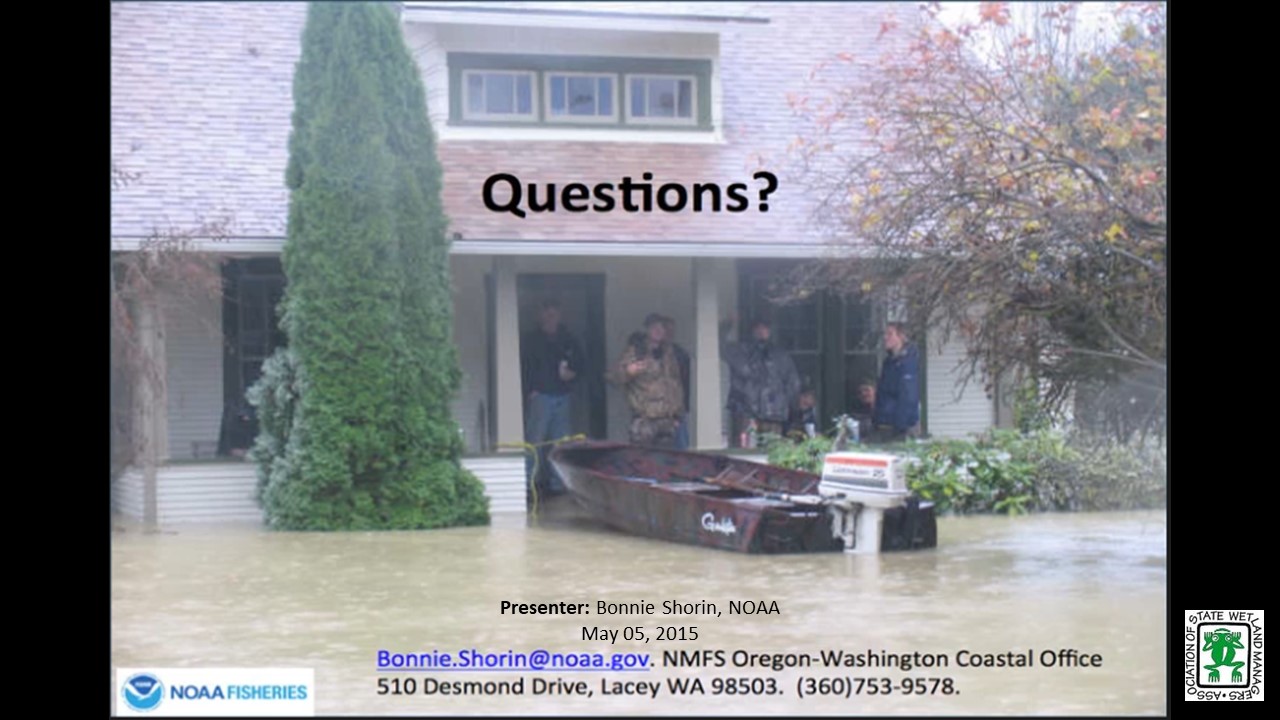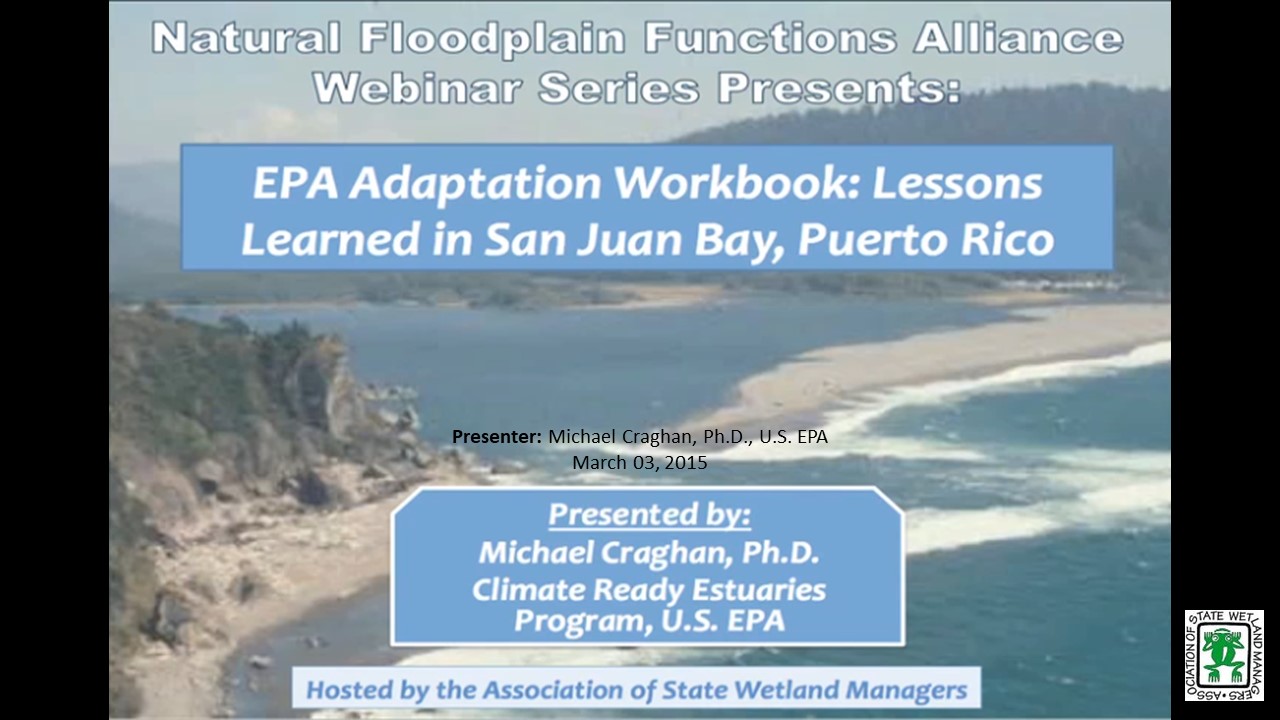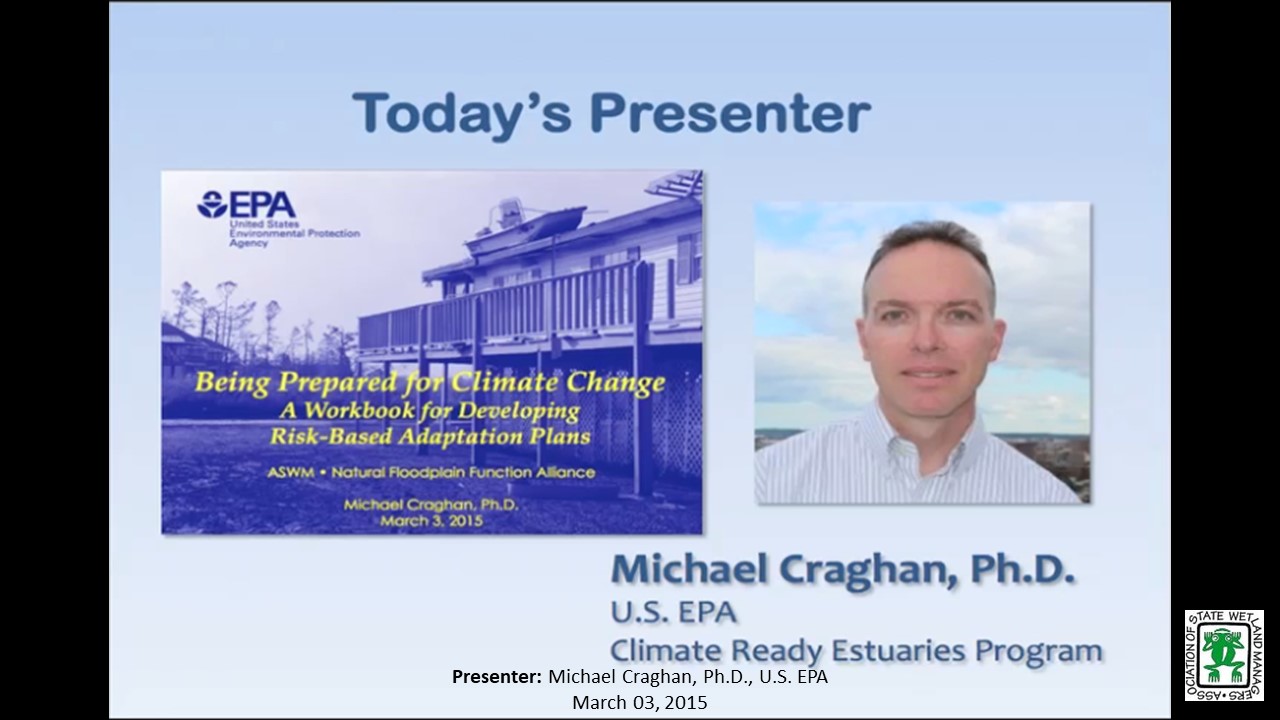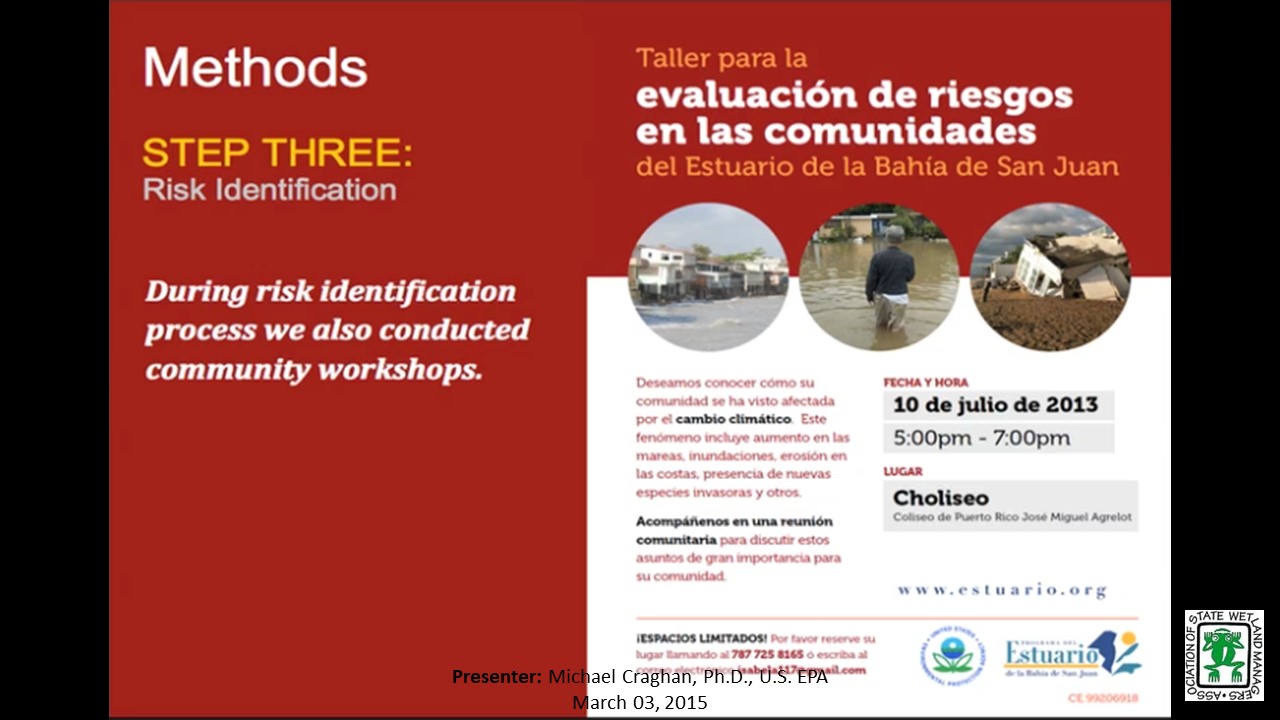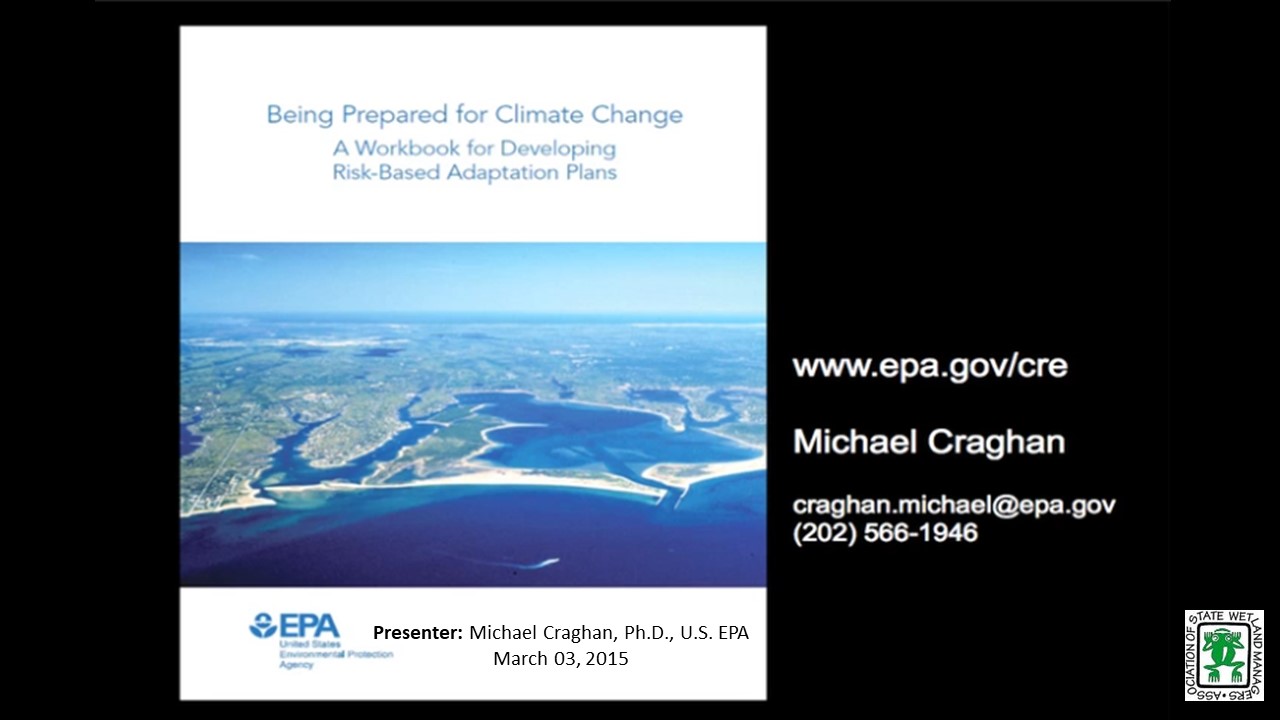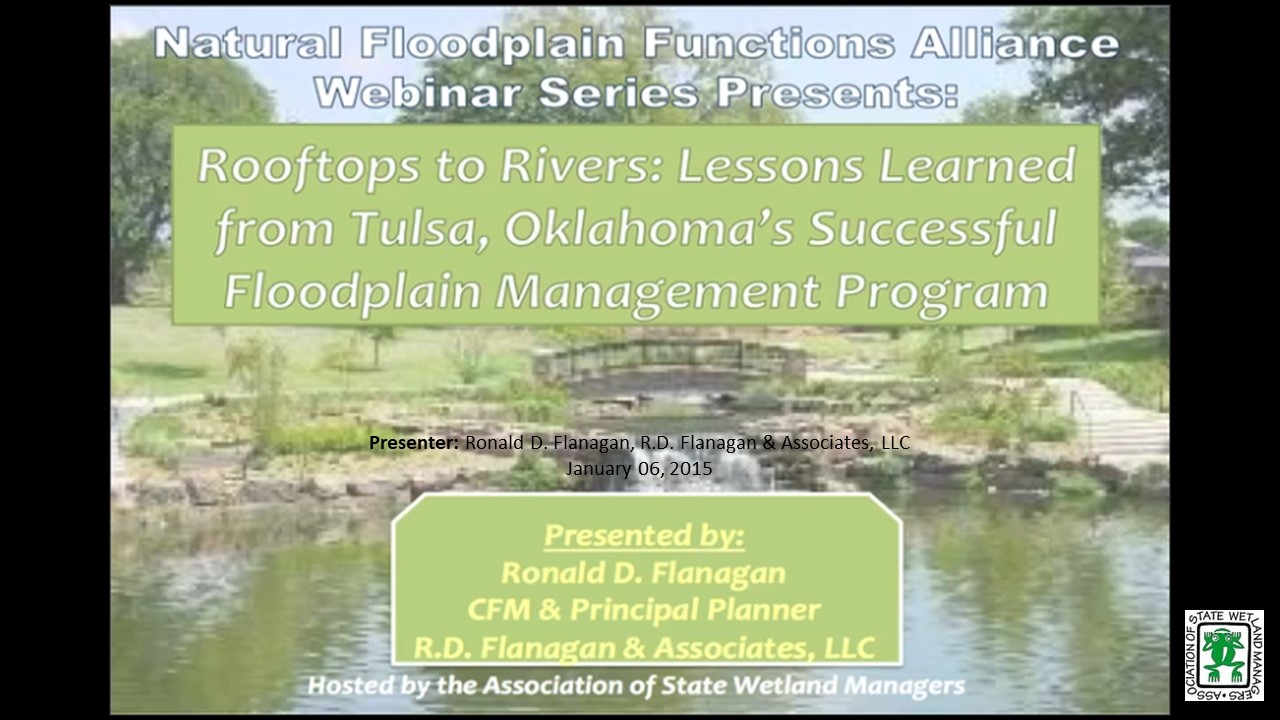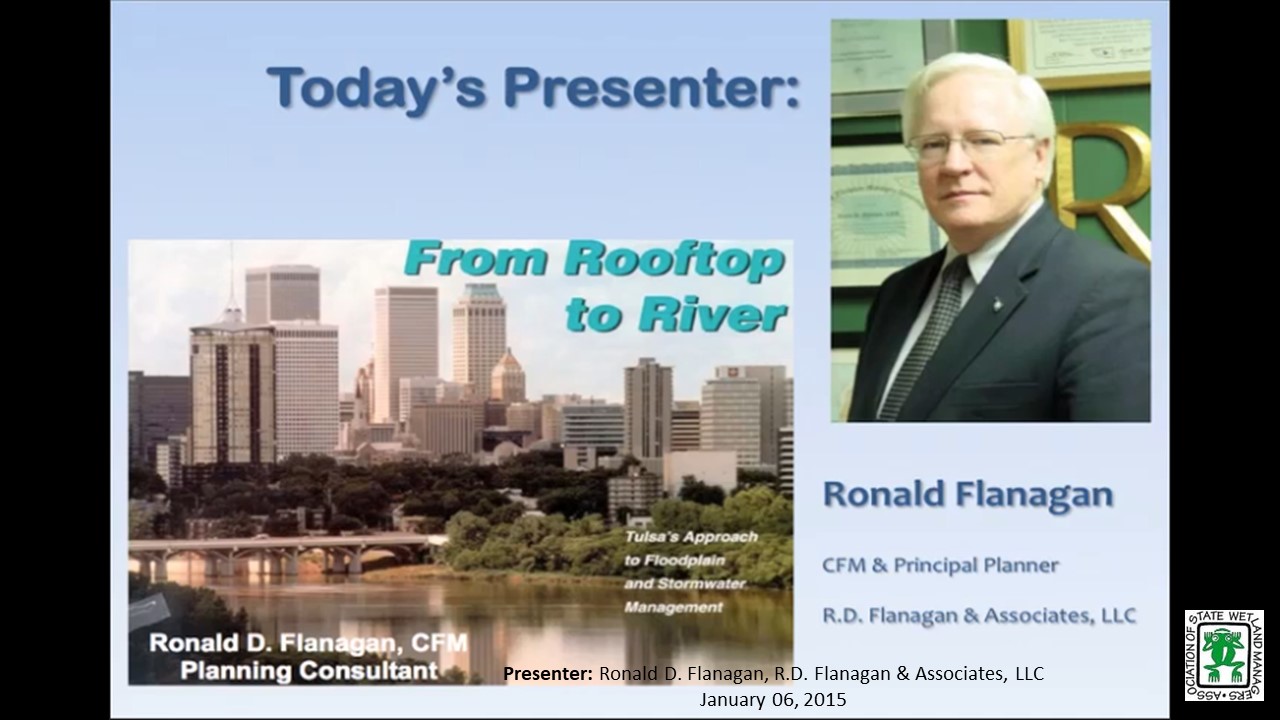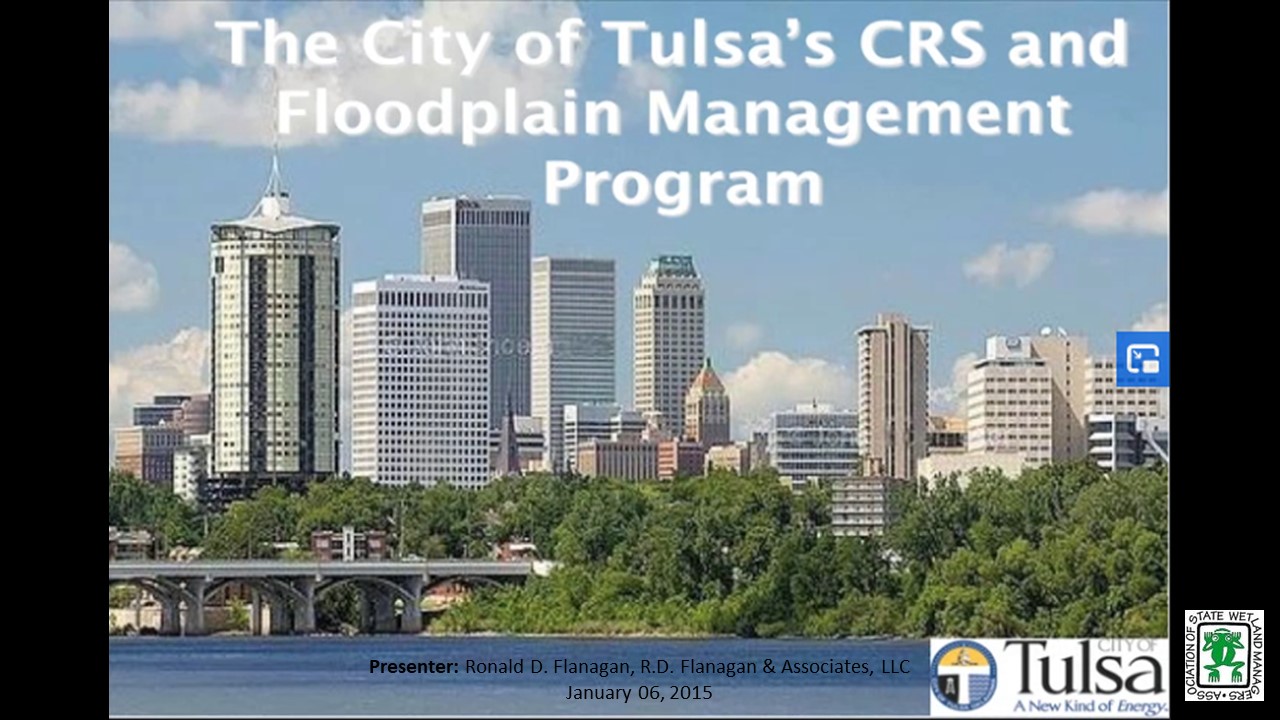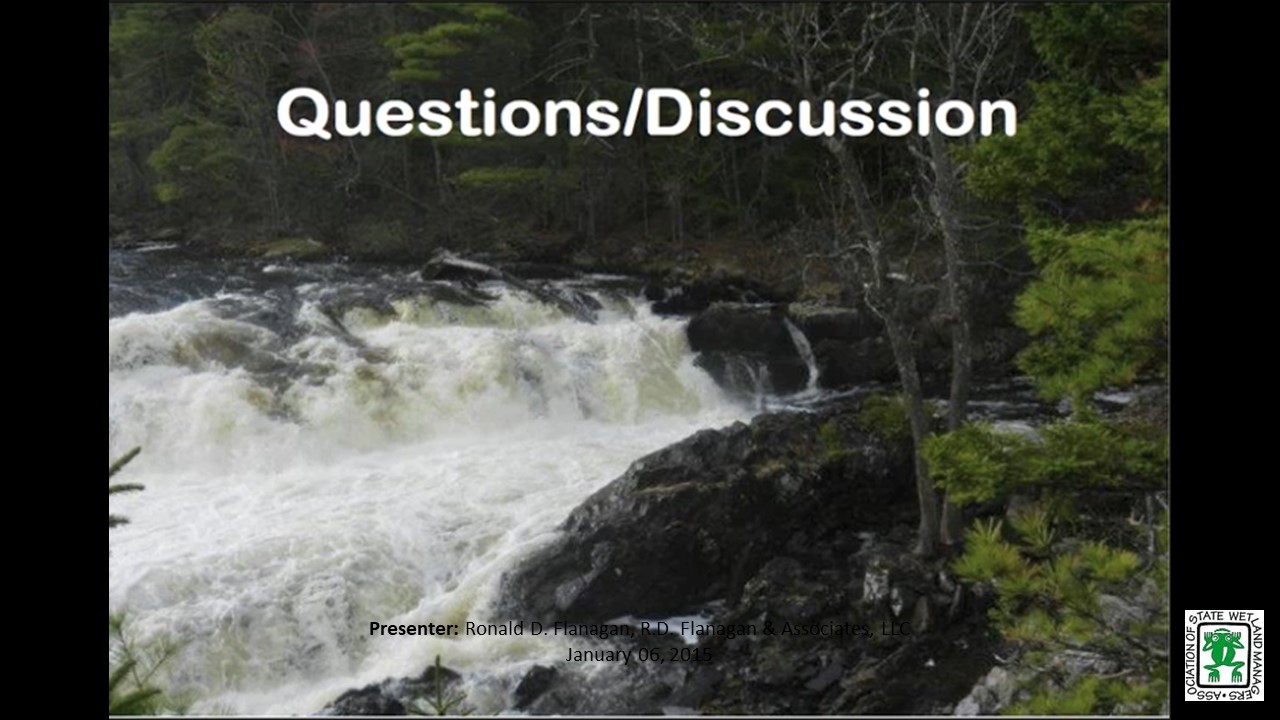An Introduction to the Marsh Adaptation Strategy Tool (MAST)
Tuesday, November 3, 2015 – 3:00 p.m. EST
- Dr. Samuel Merrill, GEI Consultants, Inc.
INTRODUCTION
- Marla Stelk, Policy Analyst, ASWM and Jeanne Christie, ASWM [PRESENTATIONS-PDF]
PRESENTERS
- Will Harman, Owner, Stream Mechanics
- Matt Daniels, Principal Engineer/Project Manager, River Design Group, Inc.
ABSTRACTS
Will Harman
Determining Functional Lift of Stream/Wetland Restoration Projects
As compensatory stream mitigation increases, a recognized need for debit/credit determination methods for stream/wetland combinations is also increasing. Most mitigation guidelines account for wetland and stream debits/credits separately. However, Interagency Review Teams and practitioners realize that there is value in restoring valley corridors that support riverine and wetland functions together. This presentation will illustrate how the Stream Functions Pyramid Framework can be used as one tool for describing functional lift of stream/wetland complexes. Case studies will be provided to show metrics and performance standards for showing functional lift, along with lessons learned from implementing these types of projects.
Matt Daniels
Use of an Ecosystem-based Approach for Stream and Wetland Restoration
The need for stream and wetland restoration projects in the western U.S., in particular the Northern Rockies and Columbia River Basin, is often driven by different mitigation objectives than those in the eastern U.S. The effects of large hydropower dams, extensive mining in headwater streams and grazing of riparian floodplains have altered migration corridors and aquatic habitat used by native fish populations, thus contributing to the listing of several threatened and endangered fish species. Extensive research has been undertaken to improve our understanding of these species' life history needs and the ecosystems in which they exist. This presentation will describe some of the restoration challenges that are unique to the western U.S in the context of addressing stream and wetland mitigation. Example projects will be used to illustrate the use of an ecosystem-based restoration approach and to highlight some of the lessons learned.
Managing Water Where It Falls: Green Infrastructure in Milwaukee, Wisconsin
Tuesday, July 21, 2015 – 3:00 p.m. ET
- Marla Stelk, Policy Analyst, ASWM [PRESENTATION-PDF]
- Kevin L. Shafer, Milwaukee Metropolitan Sewerage District (MMSD), Executive Director
![]()
Square Peg, Round Hole –Maximizing Conservation in a Flood-Insurance Construct
Tuesday, May 5 – 3:00 p.m. EDT
INTRODUCTION
- Marla Stelk, Policy Analyst, ASWM [PRESENTATION-PDF]
PRESENTER
- Bonnie Shorin, NOAA
ABSTRACT
West Coast conservation issues are salmon centric. As 26 species of west coast salmon are endangered or threatened by the risk of extinction, NMFS is continually engaged in Section Seven consultations with sister federal agencies, reviewing effects of their actions on these species and their habitat. NMFS’ review of FEMA’s National Flood Insurance Program has been complex at every turn, but the outcome has been consistent: the current program is degrading critical habitat, and making species recovery more unlikely. NMFS’ challenge is to offer viable program changes to FEMA– called Reasonable and Prudent Alternatives – to reduce the NFIP’s impact on natural and beneficial functions of floodplains.
![]()
EPA Adaptation Workbook: Lessons Learned in San Juan Bay, Puerto Rico
Tuesday, March 3 – 3:00 p.m. EST
INTRODUCTION
- Marla Stelk, Policy Analyst, ASWM [PRESENTATION-PDF]
PRESENTER
- Michael Craghan, Climate Ready Estuaries Program, U.S. EPA
ABSTRACT
EPA’s Climate Ready Estuaries published "Being Prepared for Climate Change: A Workbook for Developing Risk-Based Adaptation Plans" to provide much needed guidance for conducting risk-based climate change vulnerability assessments and developing adaptation action plans. The workbook helps users identify, analyze and prioritize climate change risks. It then guides them to address their most pressing risks and find appropriate responses. Climate change, once considered an issue for a distant future, has moved firmly into the present. By using the workbook users will be ready to protect environmental resources, public safety, and infrastructure.
![]()
Rooftops to Rivers: Lessons Learned from Tulsa, Oklahoma’s Successful Floodplain Management Program
Tuesday, January 6, 2015 – 3:00 p.m. ET
INTRODUCTION
- Marla Stelk, Policy Analyst, ASWM [PRESENTATION-PDF]
PRESENTER
- Ronald D. Flanagan, CFM & Principal Planner, R.D. Flanagan & Associates, LLC
ABSTRACT
Tulsa, Oklahoma’s history is rife with stories of devastating floods, starting as far back as the early 1900’s. Due to the hard work, dedication and ingenuity of several key players, Tulsa now has an innovative floodplain management program that can be used as a model for other communities struggling with similar issues. Ronald Flanagan, CFM and Principal Planner of Flanagan & Associates, was and continues to be a leader in these efforts. Mr. Flanagan will share the story of Tulsa’s flooding history and the development of their floodplain management program and will share insights and lessons learned from his more than 35 years of experience.
View Past Natural Floodplain Functions Alliance Webinars
Past List of Past Natural Floodplain Functions Alliance Webinar Recordings

